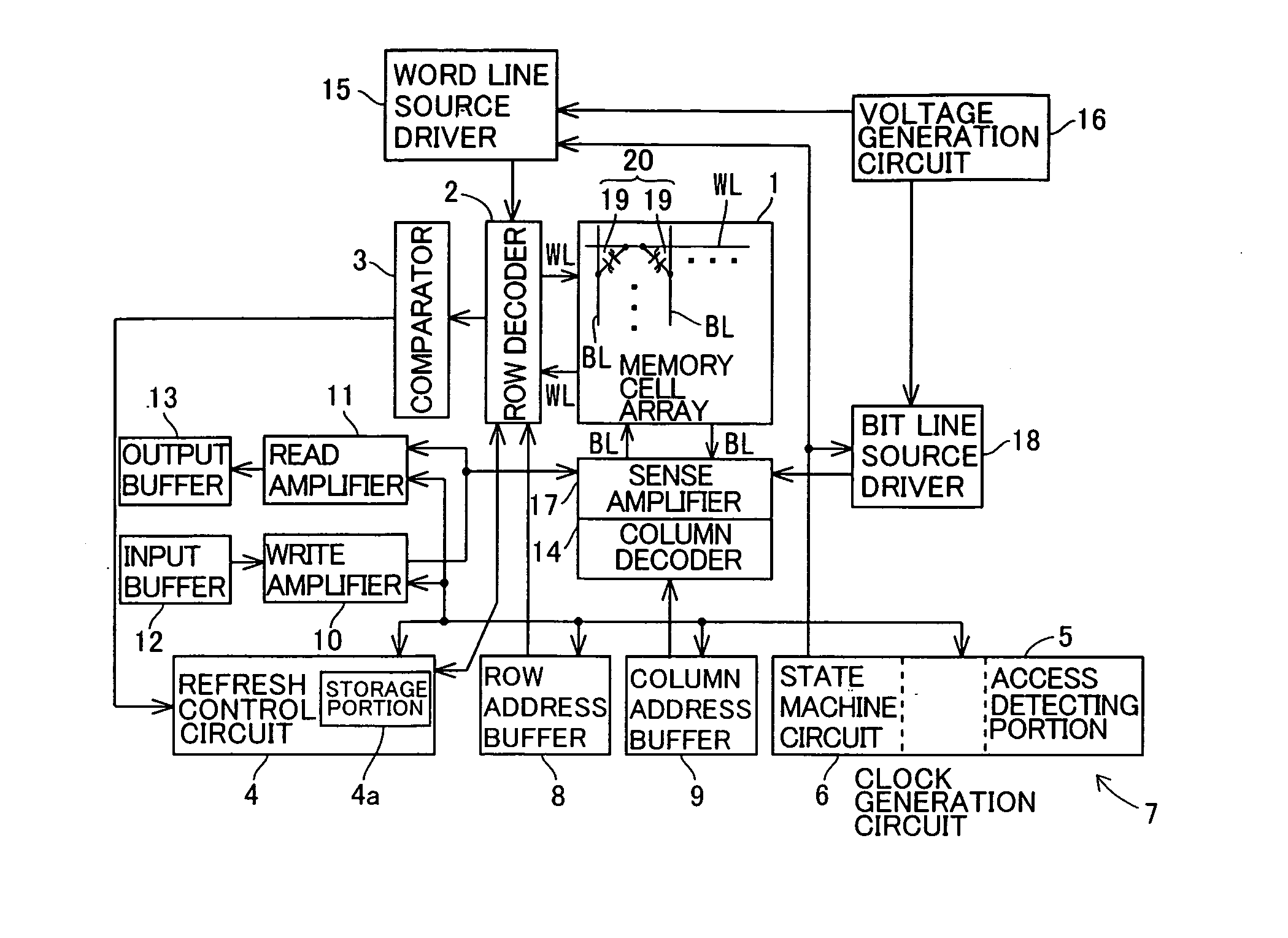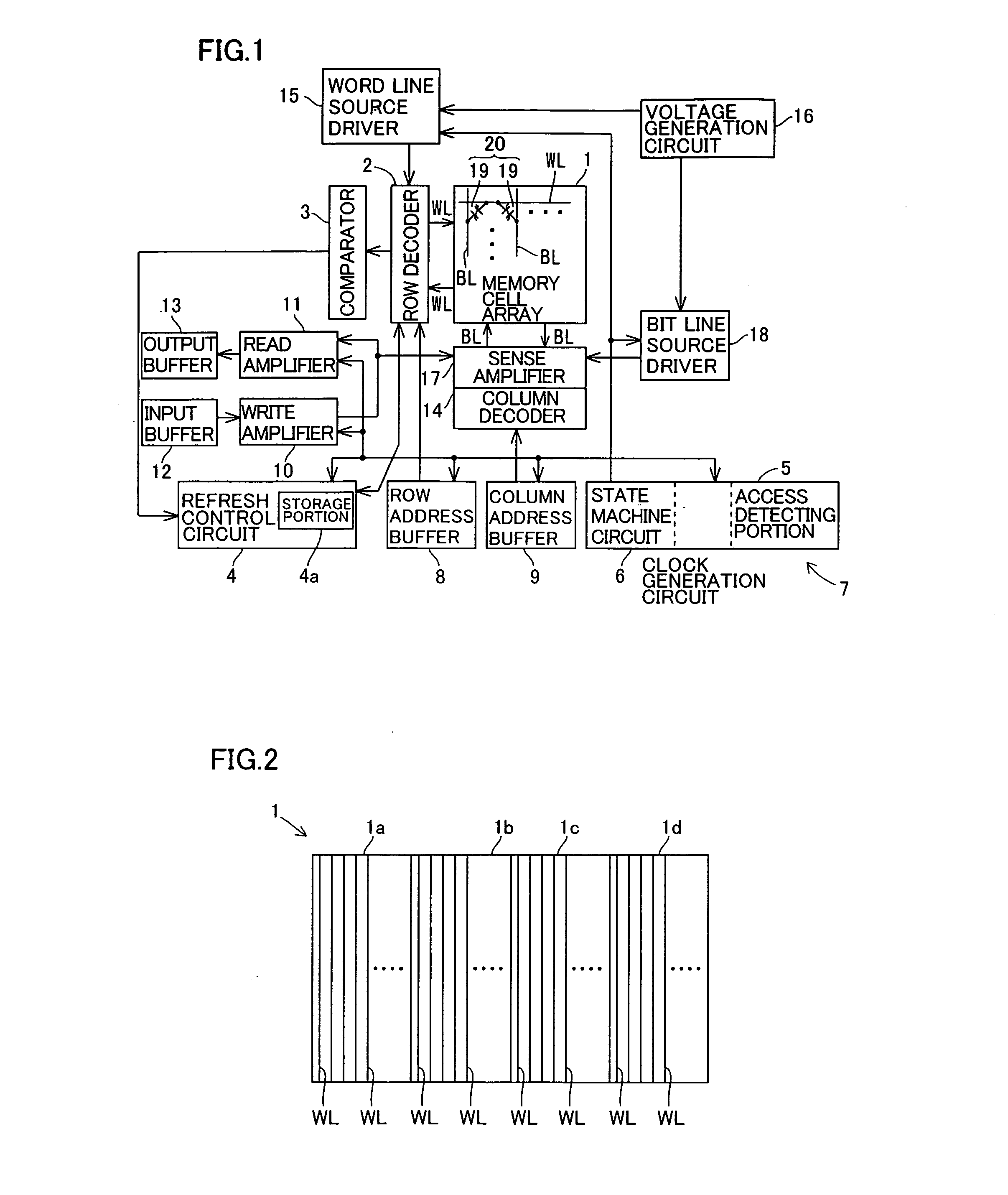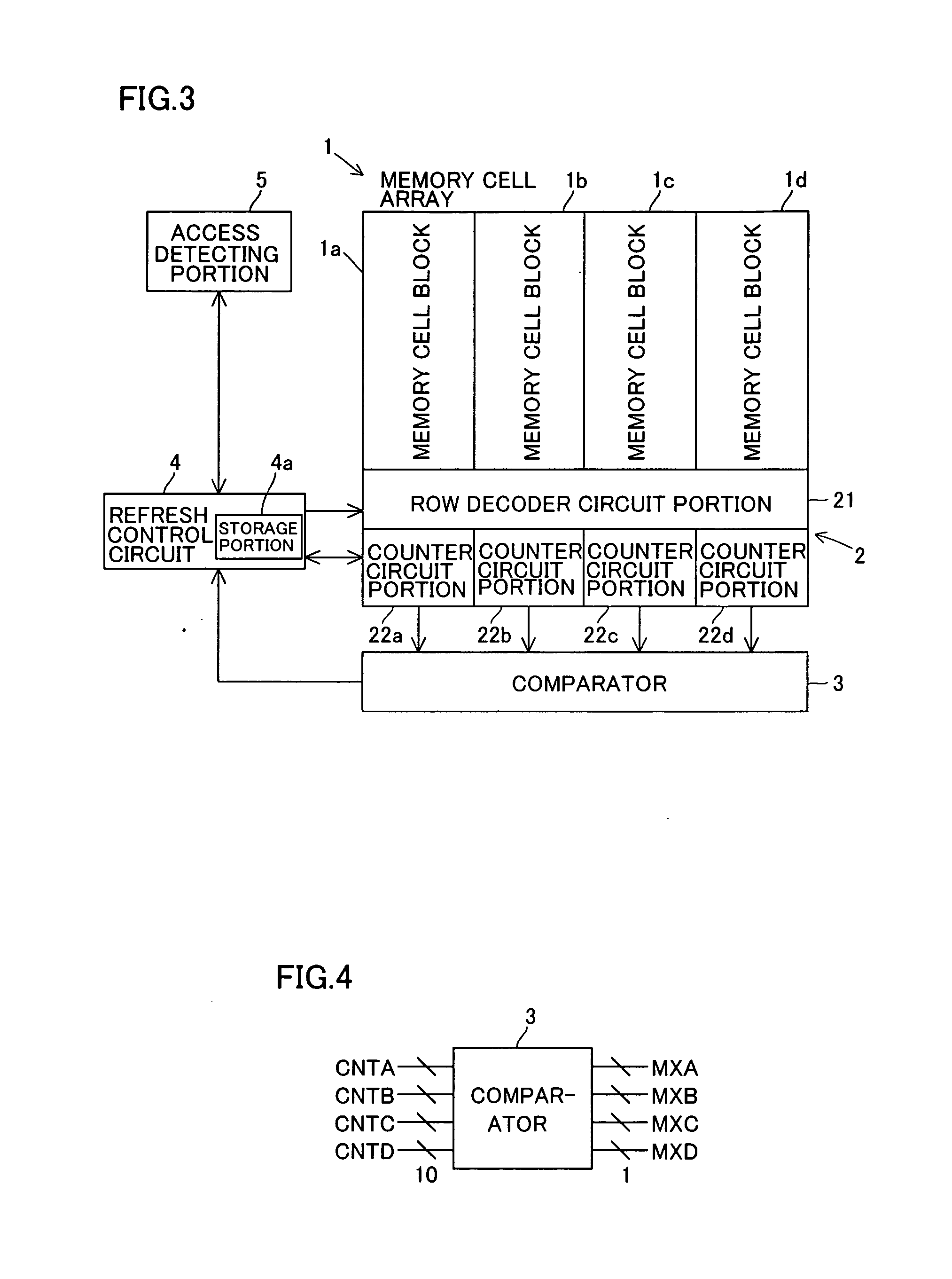Memory
a technology of memory and memory cells, applied in the field of memory, can solve the problems of data disappearance, disadvantageous increase in the frequency of disturbances caused in the refreshed memory cells, and already refreshed memory cells are disadvantageously disturbed, so as to suppress the disappearance of data resulting from disturbances
- Summary
- Abstract
- Description
- Claims
- Application Information
AI Technical Summary
Benefits of technology
Problems solved by technology
Method used
Image
Examples
first embodiment
[0043] The structure of a ferroelectric memory according to a first embodiment of the present invention is now described with reference to FIGS. 1 to 7.
[0044] As shown in FIG. 1, the ferroelectric memory according to the first embodiment comprises a memory cell array 1, a row decoder 2, a comparator 3, a refresh control circuit 4 having a storage portion 4a, a clock generation circuit 7 including an access detecting portion 5 and a state machine circuit 6, a row address buffer 8, a column address buffer 9, a write amplifier 10, a read amplifier 11, an input buffer 12, an output buffer 13, a column decoder 14, a word line source driver 15, a voltage generation circuit 16, a sense amplifier 17 and a bit line source driver 18. The refresh control circuit 4 is an example of the “refresh portion” in the present invention.
[0045] In the memory cell array 1, a plurality of word lines WL and a plurality of bit lines BL are arranged to intersect with each other while ferroelectric capacitor...
second embodiment
[0093] Referring to FIGS. 10 to 12, a ferroelectric memory according to a second embodiment of the present invention detects the sequence of access frequencies with respect to four memory cell blocks 1a to 1d, dissimilarly to the ferroelectric memory according to the aforementioned first embodiment.
[0094] According to the second embodiment, the ferroelectric memory is provided with a comparator 50 capable of detecting the sequence of the access frequencies with respect to the four memory cell blocks 1a to 1d in place of the comparator 3 in a structure similar to that of the ferroelectric memory according to the aforementioned first embodiment, as shown in FIG. 10. The remaining structure of the ferroelectric memory according to the second embodiment is similar to that of the ferroelectric memory according to the first embodiment.
[0095] As shown in FIG. 11, the comparator 50 of the ferroelectric memory according to the second embodiment is so formed as to output 2-bit output signal...
third embodiment
[0128] Referring to FIG. 14, a ferroelectric memory according to a third embodiment of the present invention detects access frequencies with respect to all memory cells in a memory cell array 1, dissimilarly to the aforementioned first and second embodiments.
[0129] As shown in FIG. 14, the ferroelectric memory according to the third embodiment is further provided with a counter 61 for detecting access frequencies with respect to all memory cells (not shown) in the memory cell array 1 in a structure similar to that of the ferroelectric memory according to the first embodiment shown in FIG. 3. The counter 61 is an example of the “second frequency detecting portion” in the present invention. This counter 61 is so formed as to increase the count thereof by +1 every time an access detecting portion 5 detects an access operation to all memory cells.
[0130] According to the third embodiment, a refresh control circuit 4 controls a refresh operation on the basis of comparison data output fr...
PUM
 Login to View More
Login to View More Abstract
Description
Claims
Application Information
 Login to View More
Login to View More - R&D
- Intellectual Property
- Life Sciences
- Materials
- Tech Scout
- Unparalleled Data Quality
- Higher Quality Content
- 60% Fewer Hallucinations
Browse by: Latest US Patents, China's latest patents, Technical Efficacy Thesaurus, Application Domain, Technology Topic, Popular Technical Reports.
© 2025 PatSnap. All rights reserved.Legal|Privacy policy|Modern Slavery Act Transparency Statement|Sitemap|About US| Contact US: help@patsnap.com



